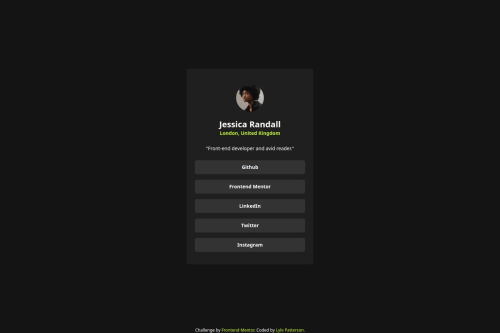Social Links page using flexbox and tailwind.

Solution retrospective
This was my first time using tailwind and while it was hard to get used to, I'm proud of how quickly I adapted to it. I'd actually include tailwind in my project next time instead of simply getting the link for the site as I did this for easiness here.
What challenges did you encounter, and how did you overcome them?Mainly just getting used to tailwind and also trying to get my margin/padding as close as possible to the design given.
What specific areas of your project would you like help with?Is it normal in tailwind to just have multiple classes that are the exact same? This doesn't seem efficient. I also think I was too precise with my margins here and it feels like there was a better way to do this.
Please log in to post a comment
Log in with GitHubCommunity feedback
No feedback yet. Be the first to give feedback on Lyle Patterson's solution.
Join our Discord community
Join thousands of Frontend Mentor community members taking the challenges, sharing resources, helping each other, and chatting about all things front-end!
Join our Discord